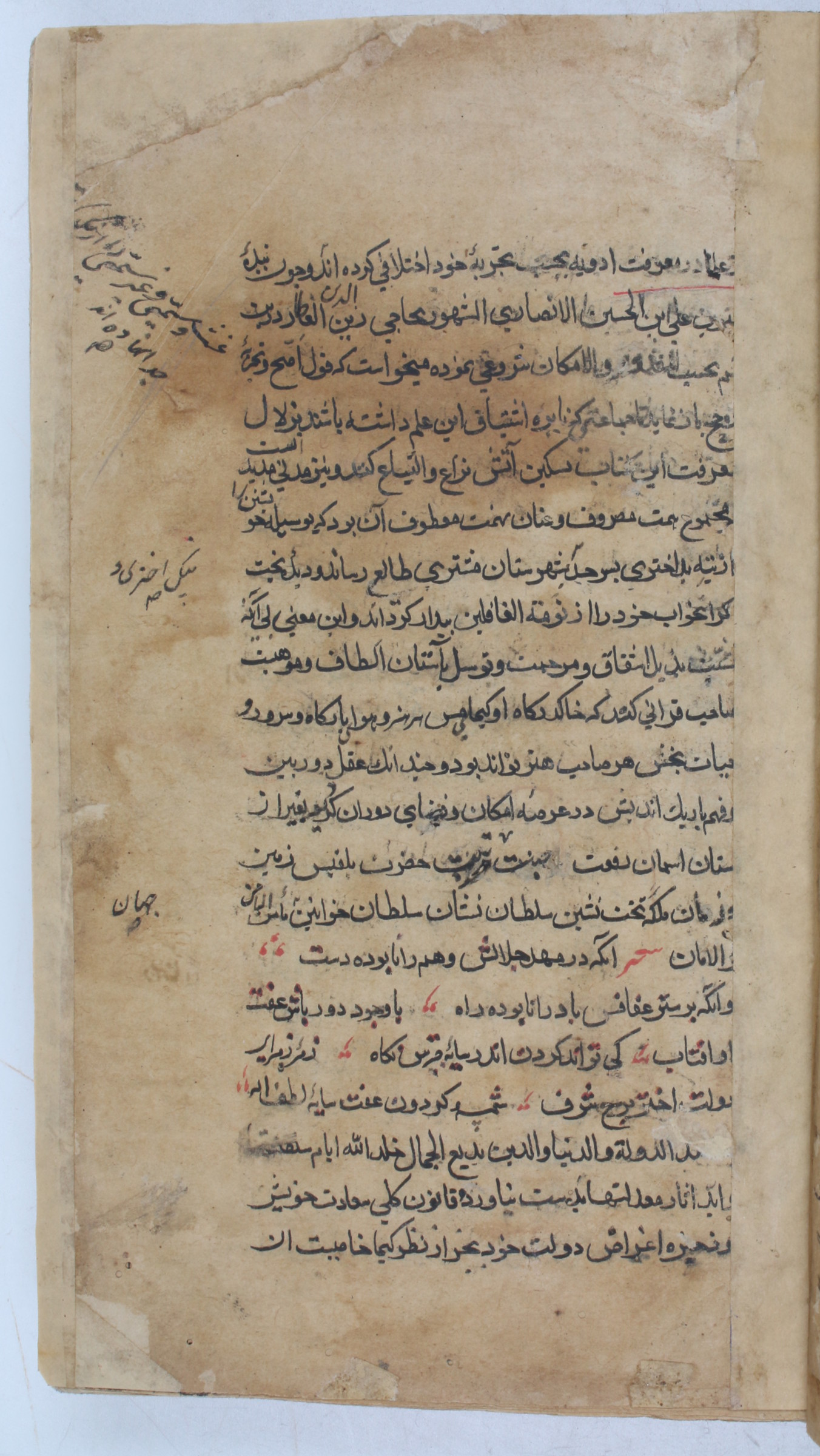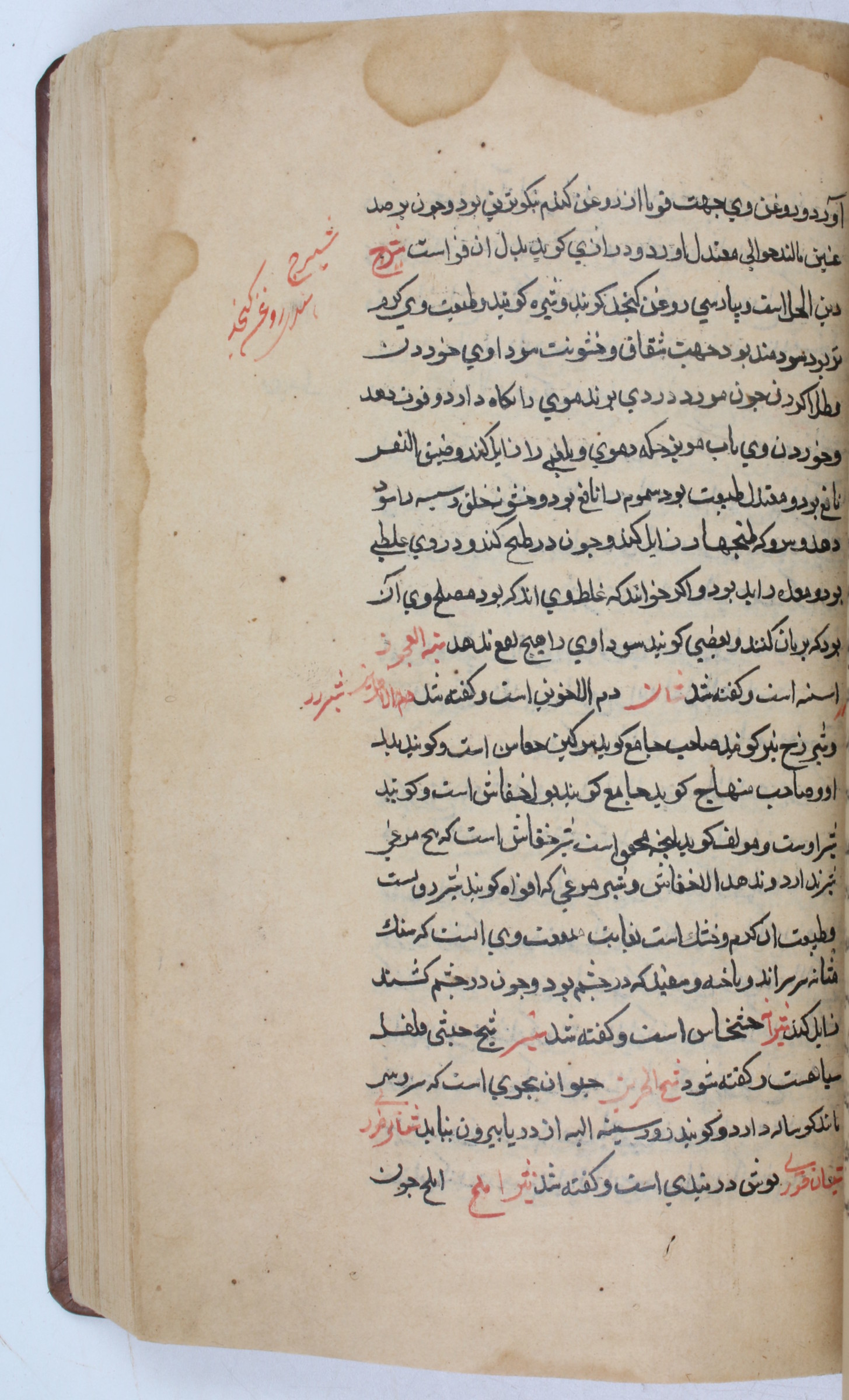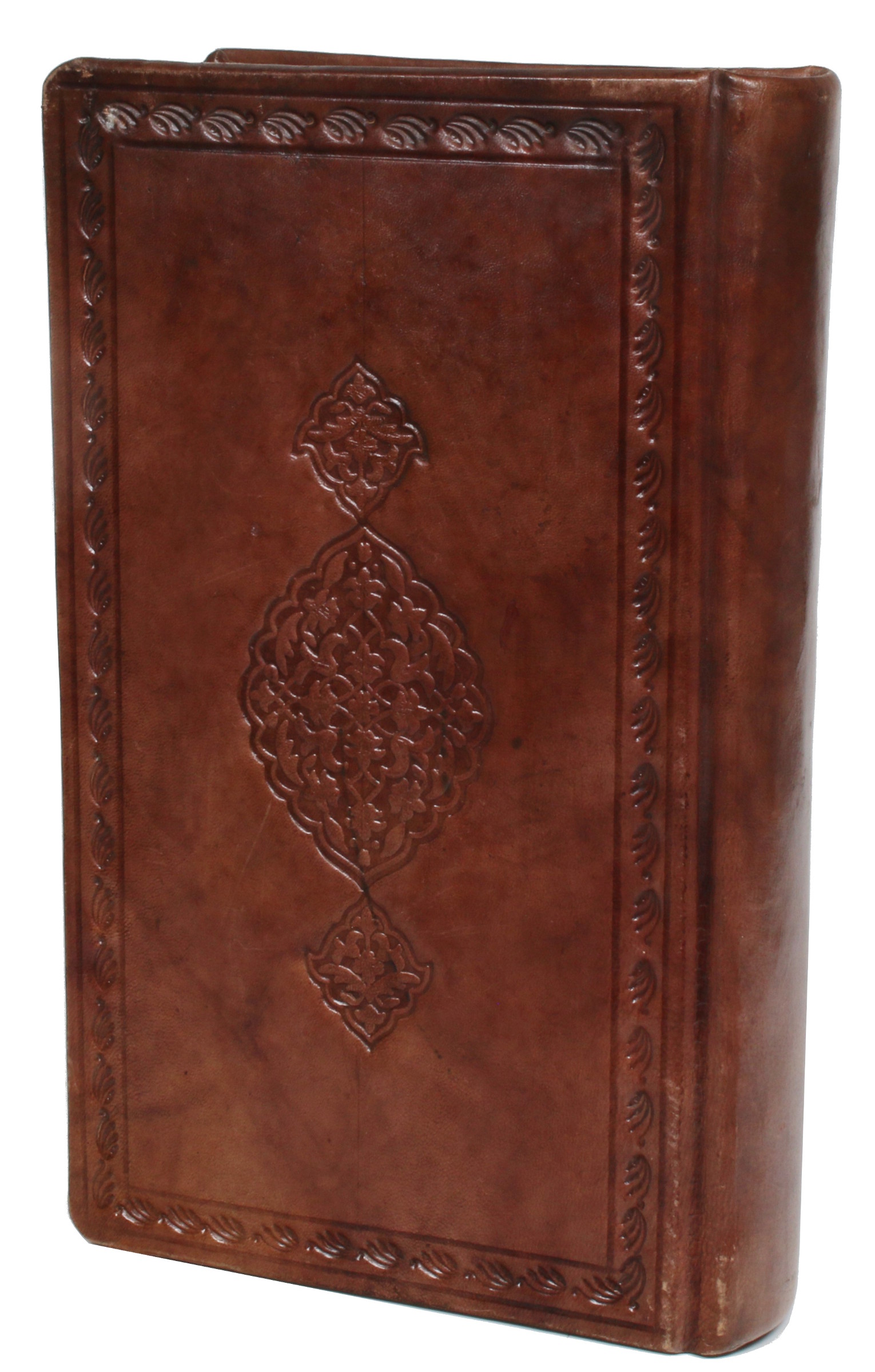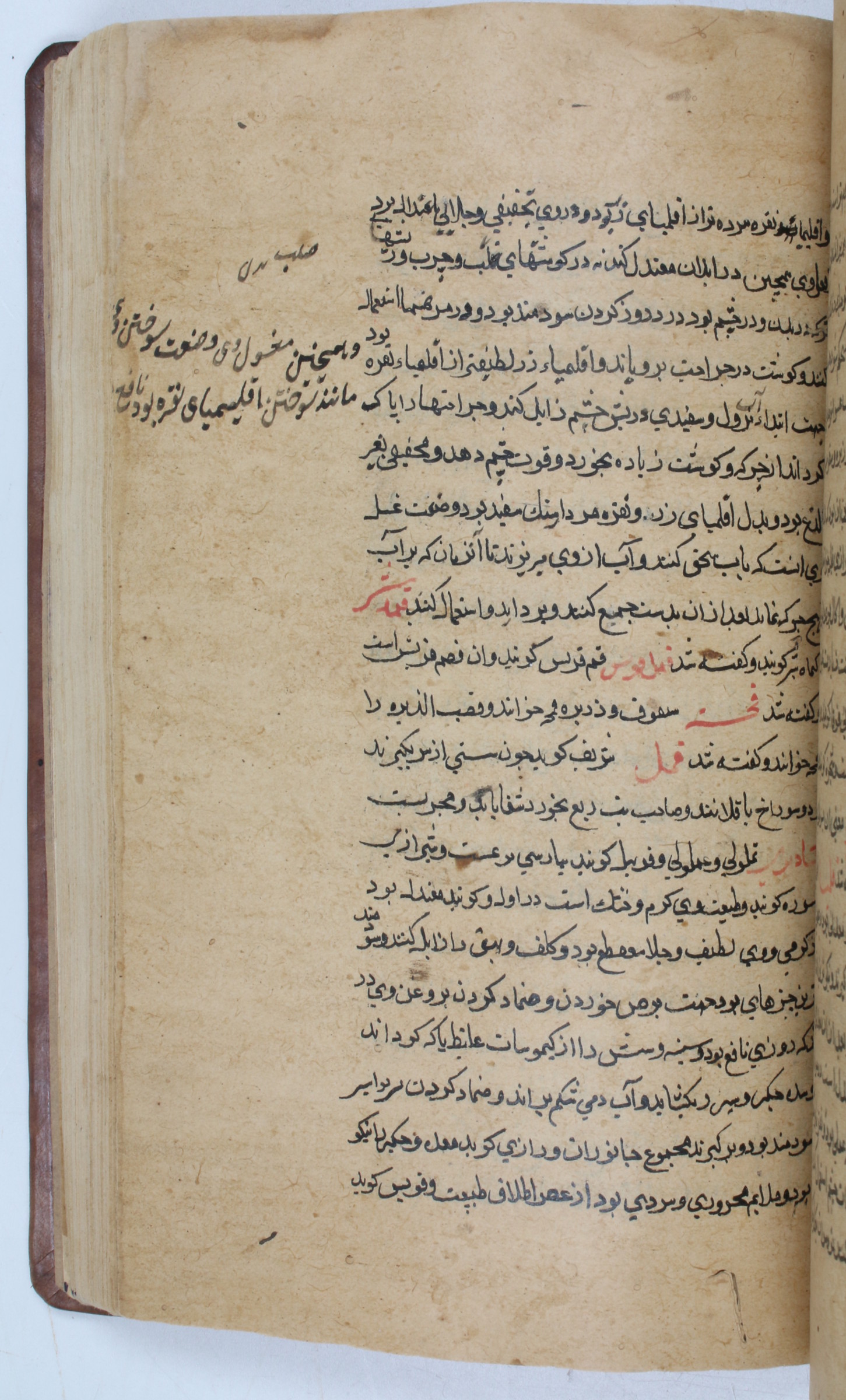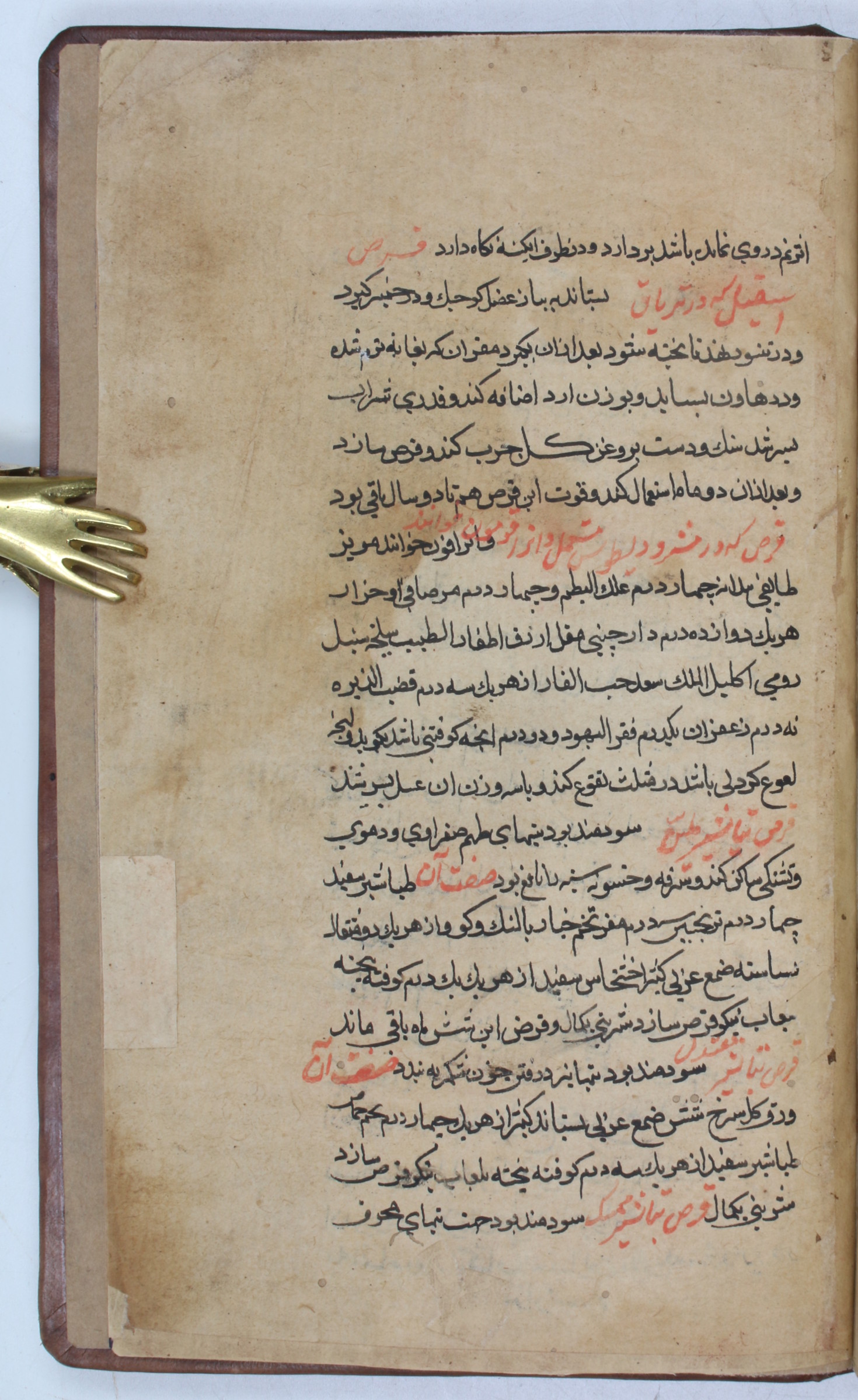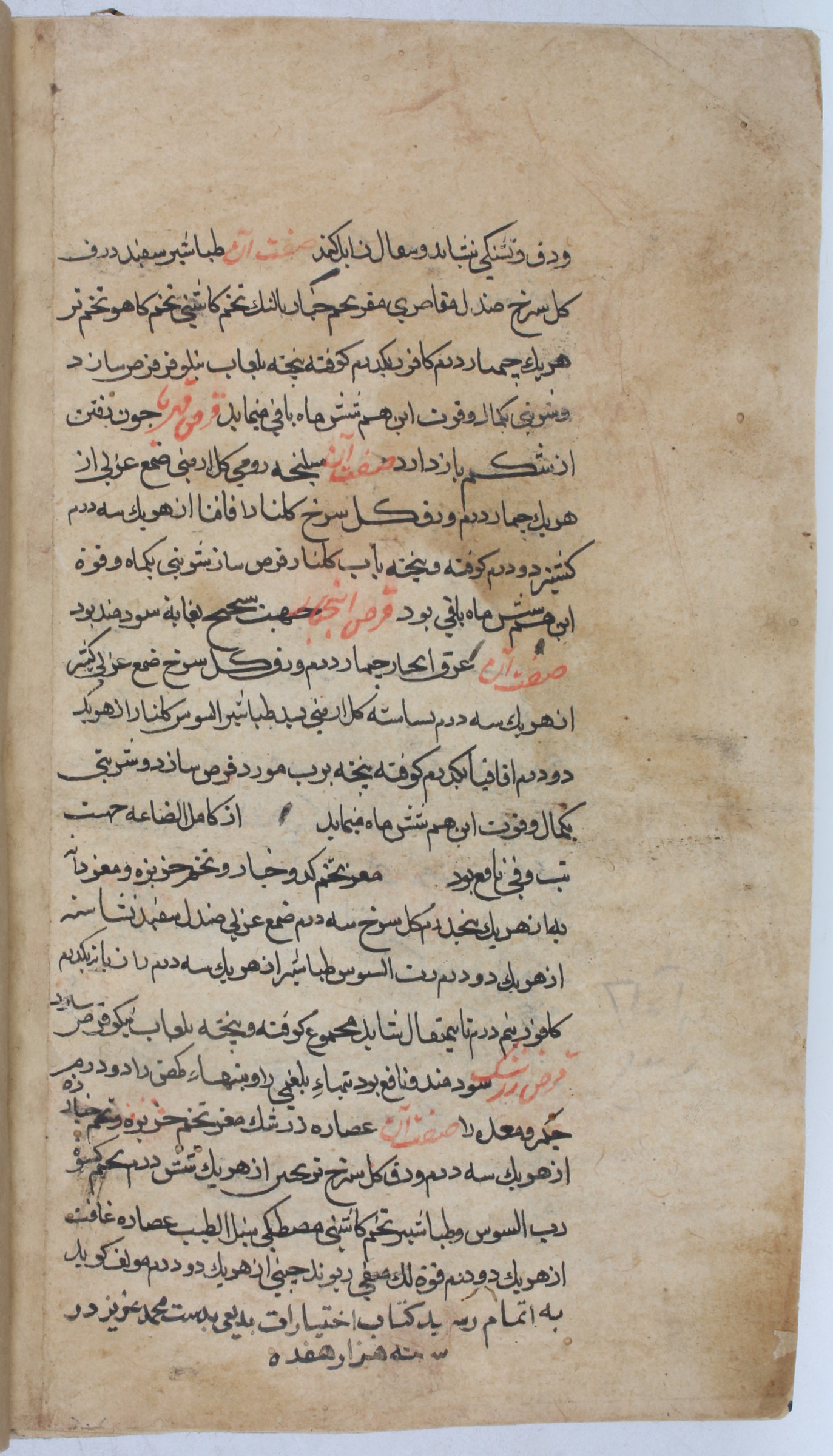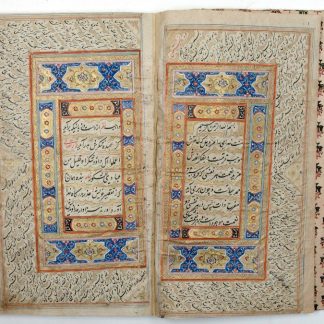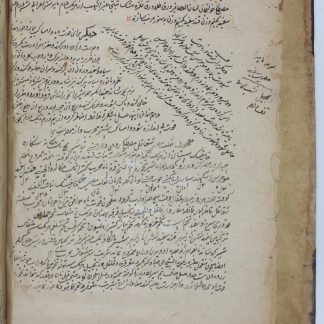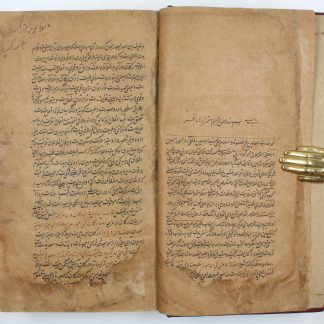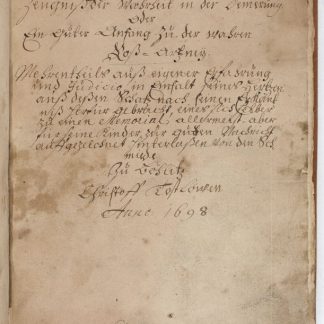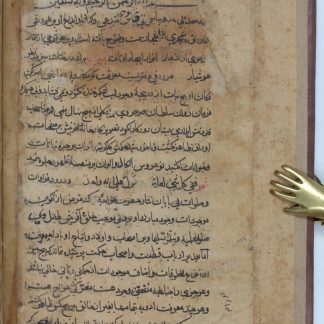"Looking at zebra is good for the eyesight"
Ikhtiyarat-i Badi'i [Selections for Badi'i].
8vo (148 x 236 mm). Persian manuscript on polished oriental wove paper. 315 ff. 21 lines of black and occasional red script. Bound in full 20th century brown leather, stamped in blind with oriental medallions and borders.
€ 16.000,00
Very early 17th century manuscript of one of the most important books on diseases, pharmacology, and materia medica written in Persian in the Islamic era. Ansari Shirazi (1329-1403) was a famous physician of the Mughal period, serving as the personal physician to the Muzaffarid prince Sultan Jalal ud-Din Shah Shuja (1333-84), at whose court he would have known the poet Hafez. The title of the present work, "Selections for Badi", alludes to another important court personage: it is dedicated to the princess 'Ismat al-Din Badi' al-Jamal, possibly the wife of Shah Shuja's father Mubariz al-Din Muhammad.
The work is divided into two sections, with descriptions of simple drugs listed alphabetically by name in the first section, and descriptions of compound drugs listed in sixteen chapters by type of preparation in the second. Widely popular, the book is considered a gem of Persian medical literature: indeed, scholars have claimed that "in the history of Persian medicine, the book 'Ikhtiyarat Badiei' is considered the most important book written in Persian", citing the large number of sources and remedies it provided the medieval reader, though some irrational fallacies are noted as well: "In three entries in Ikhtiyarat Badiei, the author has illustrated some superstitious ideas, namely that 'If the food is poisonous, and the weasel finds out, it will shout and its hair will stand on its end' and says: 'looking at zebra is good for the eyesight'" (Ghazi Sha'rbaf, 99). Among the simple drugs described in the opening section are the treatments derived from the sea slug known as "arnab bahri" (literally "sea hare"), whose ashes are declared useful for alopecia.
Paper browned evenly throughout, some brownstains and waterstains, occasional traces of worming, mainly confined to margins. First leaf rebacked. The colophon states the date of the copy, 1017 AH, as well as the name of the scribe, Muhammad Aziz.
Cf. Javad Ghazi Sha’rbaf et al., "Introducing the Book Ikhti-yarat Badiei: An Investigation Over its Importance in the Pharmacology of the Islamic Period", in: Journal of Research on History of Medicine 9.2 (2020), pp. 95-102.


